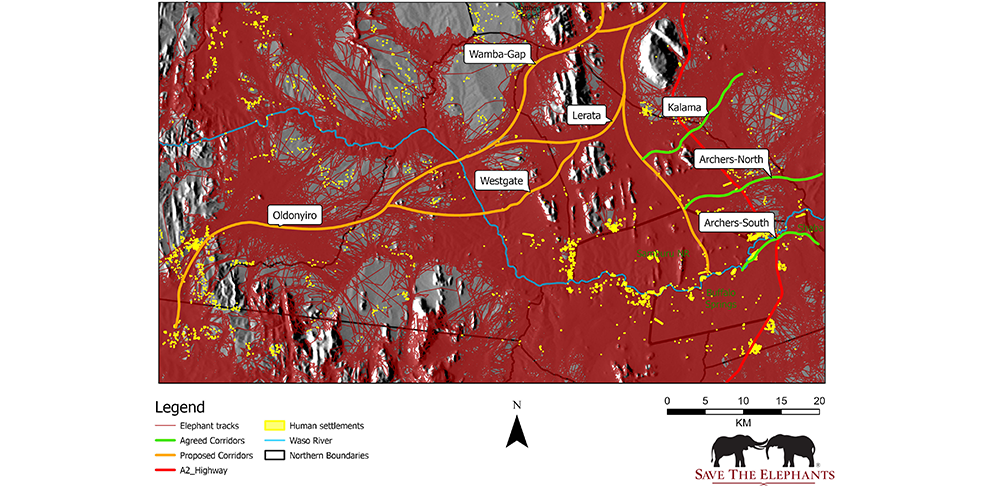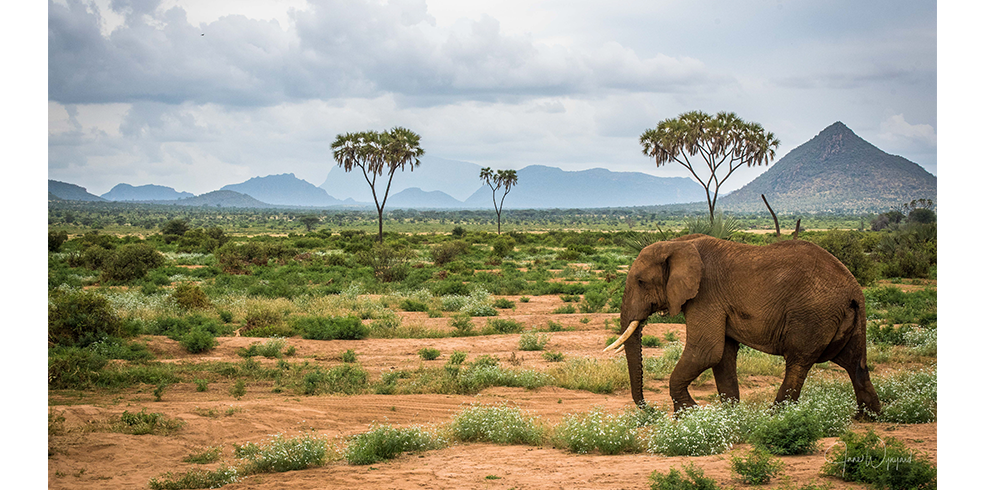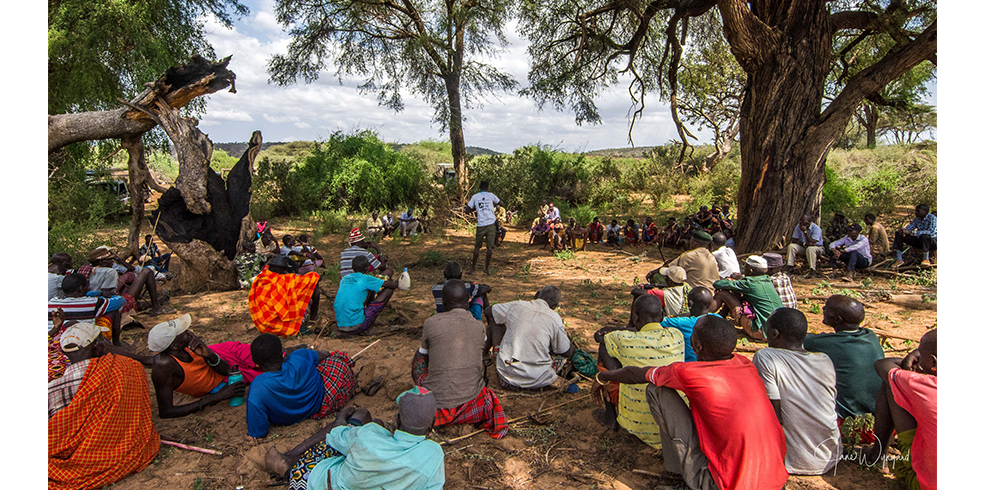Above: Wildlife and livestock corridor in northern Kenya demarcated by pillars. Corridors are crucial in linking wildlife conservation areas
Wildlife, including elephants, are facing threats to their natural habitats as human populations expand and infrastructure development accelerates. As a result, there is increased pressure on people, wildlife and livestock to share the landscape and available resources.
As part of our mission to secure a future for the world’s largest land mammal, Save the Elephants has teamed up with the Wyss Academy for Nature to safeguard wildlife and livestock movement corridors in northern Kenya. This will help prevent the fragmentation of this fast-changing landscape.
Analysing more than 20 years of radio tracking data from almost two hundred tracked elephants, STE has been able to identify major migratory routes being used by elephants which are now under threat of being blocked because of human pressure.

This map, created by Save the Elephants’ researchers, shows the major livestock and wildlife corridors across northern Kenya
Leading the charge on this collaboration is STE’s Corridors Manager, Benjamin Loloju, and East Africa Hub Director for Wyss Academy (and STE alumnus), Dr Ben Okita-Ouma. As part of his post graduate studies at Cranfield University, Benjamin looked at the threats to corridors, particularly Oldonyiro where he was born and raised, and found human encroachment and erosion gullies, caused by livestock overgrazing, to be the main challenges.
“Corridors are a critical lifeline for elephant movement and survival. When blocked, elephants have no choice but to navigate a human dominated landscape which often results in human elephant conflict. But, when elephants can roam freely between landscapes in search of food, water and mates, there is peace“ says Loloju, who further adds that “people and other wildlife also depend on these corridors for seasonal migration”.

Elephants like this bull in Samburu National Reserve need to be able to roam freely between landscapes in search of food, water and mates
A key focus of STE’s work involves engaging with local communities about the importance of corridors and working with them and other stakeholders, such as government and conservation partners, towards sustainable ways of protecting corridors, with the ultimate goal for the communities to secure and gazette them into law with the support of the County Governments and National Lands Commission.
“Being aware of the needs of the human communities whose buy-in is essential for the long-term success of ensuring nature’s resilience, will be critical in promoting ecosystem and landscape connectivity to keep nature, wildlife and people thriving,” says Okita-Ouma.
Photos: Jane Wynyard/Save the Elephants


